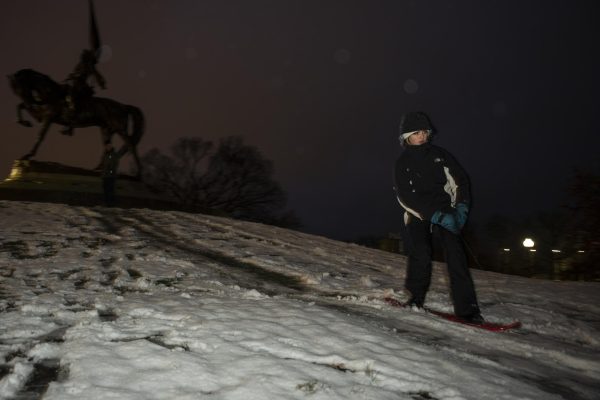Rising tuition costs not unique to Columbia
December 4, 2018

Rising tuition costs not unique to Columbia
Reactions from students and faculty to Columbia’s 2019–2020 academic year tuition increase are split between exasperation and acceptance, but the hike is part of a larger national trend in higher education costs, according to the College Board, a not-for-profit organization founded in 1900 to expand access to higher education.
President and CEO Kwang-Wu Kim announced in a Nov. 27 email to students that full-time tuition will increase 2 percent—from $26,090 to $26,610—and on-campus housing costs will increase 3.5 percent.
However, Columbia’s 10th consecutive tuition increase since 2010 is part of a national trend of colleges raising tuition amid declining student enrollment and rising salary and benefit mandates, according to Sean Andrews, associate professor in the History, Humanities and Social Sciences Department and president of Faculty Senate.
The price of private nonprofit universities in the U.S. has nearly doubled since 1988, and the cost of public four-year universities has more than doubled, according to the College Board.
The trend continues for local colleges in Chicago, where most have seen tuition increases in the past five years. For Loyola University’s 2018–2019 academic year, tuition was increased 2.4 percent and housing was increased 4.7 percent, according to a Jan. 22 letter from President Jo Ann Rooney to students. At Northwestern University, tuition and room and board increased 3.6 percent for the 2018 – 2019 academic year, according to an April 20 Northwestern press release.
Loyola and Northwestern have not yet set tuition rates for the 2019–2020 academic year.
Veronique Hall, student trustee of the Student Government Association and junior public relations major, said Kim often asks SGA for student feedback on proposed cost changes. For Kim’s recently announced increase, Hall said students thought the raise was appropriate and were grateful the college did not raise tuition costs higher than 2 percent.
“Some students were concerned; they felt like they wouldn’t be able to respond or provide for themselves, but Dr. Kim did say they can go to Student Financial Services and be proactive about the increase,” Hall said.
For students paying their own tuition, though, Andrews recognizes that the raise will be a burden on them, which he is still paying off for himself.
Ash Hannah, a sophomore photography major, is one such student. Hannah said she will struggle to find the extra $520 to pay her tuition for the next academic year.
“I don’t know how I will afford to keep going to school here,” Hannah said. “It’s honestly starting to make me think, ‘Is this school going to really screw up my future in the end?’ It has me worrying.”
Andrews said the raised tuition is just a sticker price, and most students don’t pay full price due to scholarships, grants and financial aid contributions. He added that the college is implementing more scholarship opportunities to provide for current students, and to attract prospective ones.
“Students who can pay more end up having to subsidize students who can’t, and that’s basically the dirty secret of all colleges across the country,” Andrews said.
Causes of national college and university tuition increases can be attributed to numerous causes, Andrews said, including high employment costs, extensive benefits and healthcare costs for faculty and, most significantly, the decreasing amount of government funding for colleges.
“When you have someone like [Senator] Bernie Sanders [(I-Vt.)] saying we should have free college for all people in the U.S., this is a public issue that, at a national level, we should all be thinking and talking about,” Andrews said. “Because it’s imminently doable, we could definitely do it. That would reverse the trend, having a massive reinvestment of higher education.”







